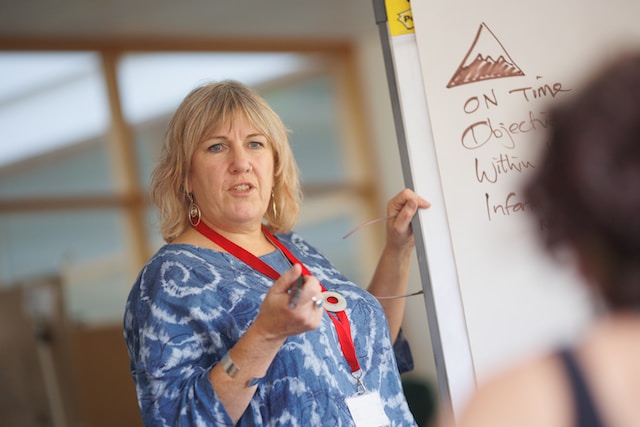Introduction In the dynamic realm of education, the advent of virtual teaching has emerged as a transformative force. Dr. Emma Reynolds, a luminary in educational technology, invites us on an enlightening journey to explore the profound impact of virtual teachers on the pursuit of educational excellence. With over two decades of experience, Dr. Reynolds is
Introduction
In the dynamic realm of education, the advent of virtual teaching has emerged as a transformative force. Dr. Emma Reynolds, a luminary in educational technology, invites us on an enlightening journey to explore the profound impact of virtual teachers on the pursuit of educational excellence. With over two decades of experience, Dr. Reynolds is uniquely positioned to unravel the intricacies of this evolving landscape.
What Are Virtual Teachers?
Virtual teachers are software-driven or remotely delivered instructional agents that guide, assess, and support learners. They include:
- AI tutors that adapt explanations to individual student gaps
- Online teaching assistants who answer routine questions in real time
- Virtual instructors delivering live or pre-recorded lessons
- Chatbot helpers that reinforce practice and give feedback
- Hybrid systems combining human oversight with algorithmic personalization
These tools don’t replace good teachers. Instead, they extend their reach, handle repetitive tasks, offer instant feedback, and free educators to focus on high-value coaching and critical thinking.
The Rise of Virtual Teaching
The genesis of virtual teaching can be traced back to the convergence of technology and education. Dr. Reynolds delves into the historical context, highlighting key milestones that have propelled virtual teaching from a novel concept to a pivotal player in the educational arena. From the first experiments with online courses to the widespread adoption of virtual classrooms, the journey has been nothing short of revolutionary.
Why Virtual Teachers Catalyze Educational Excellence
1. Personalized Learning at Scale
Traditional classrooms often teach to the middle, leaving fast learners bored and struggling students behind. Virtual teachers can assess each student’s level, adapt content speed, and offer targeted hints. AI tutors, for example, adjust problems in math or reading based on real-time answers, ensuring everyone progresses from their own starting point. Personalized pathways increase engagement and mastery.
2. Immediate Feedback
One big advantage of virtual teachers is speed. Instead of waiting days for graded work, students get instant corrections and explanations. This feedback loop helps them fix misunderstandings before they become permanent errors. Quick reinforcement is linked to better retention and confidence.
3. Data-Informed Instruction
Virtual systems collect learning data: which questions students miss, time spent per concept, and patterns of mistakes. Teachers can use that information to spot classwide gaps, group students for peer support, or intervene early. That turns raw activity into actionable insight—key to improving outcomes.
4. Extending Teacher Capacity
Educators often juggle grading, lesson prep, and classroom management. Virtual teachers can take over routine tutoring, quiz generation, and progress tracking. That gives human instructors breathing room to design richer projects, mentor, and nurture social-emotional skills.
5. Equity and Access
Students in remote areas or under-resourced schools can get consistent, high-quality support through virtual teachers. Language support, on-demand help outside school hours, and supplemental instruction can reduce gaps caused by geography or staffing shortages.
Advantages of Virtual Teachers
What sets virtual teachers apart in the educational paradigm? Dr. Reynolds meticulously dissects the advantages, emphasizing how virtual teachers bring a personalized touch to learning. The global accessibility they offer levels the playing field, transcending geographical barriers and providing students with opportunities previously unimaginable. The flexibility inherent in virtual learning environments accommodates diverse learning styles, fostering a more inclusive educational experience.
Strategies for Effective Virtual Instruction

Photo by Centre for Ageing Better on Unsplash
Transitioning from traditional to virtual teaching requires a nuanced approach. Dr. Reynolds, drawing on her wealth of experience, shares strategies that empower virtual teachers to create engaging and effective lessons. From leveraging interactive multimedia elements to fostering a sense of community in virtual classrooms, these strategies form the bedrock of successful virtual instruction.
Navigating Challenges
While the benefits of virtual teaching are undeniable, challenges persist. Dr. Reynolds candidly addresses the hurdles faced by virtual teachers and administrators alike. Connectivity issues, maintaining student engagement, and adapting to evolving technology are explored with an emphasis on practical solutions. By acknowledging and proactively addressing challenges, the educational community can ensure a smoother transition to virtual learning environments.
Real-World Success Stories
The impact of virtual teachers reverberates through real-world success stories. Dr. Reynolds shines a spotlight on educational institutions that have embraced virtual teaching models, showcasing tangible improvements in student outcomes. These success stories serve as beacons of inspiration, illustrating how virtual teachers can be catalysts for transformative change, particularly in narrowing educational gaps.
Key Considerations for Implementation
For institutions contemplating the integration of virtual teaching, a thoughtful approach is essential. Dr. Reynolds delineates key considerations, from establishing robust technological infrastructure to comprehensive teacher training programs. The success of virtual teaching hinges on meticulous planning and a commitment to addressing the unique challenges that may arise during the implementation phase.
The Future of Education
Peering into the future, Dr. Reynolds offers predictions on how virtual teachers will continue to shape the educational landscape. The role of virtual teachers is not merely a temporary solution but an enduring force driving educational innovation. As technology advances and virtual teaching evolves, Dr. Reynolds envisions a future where the traditional boundaries of education are transcended, paving the way for a more interconnected and accessible learning experience.
- Multimodal virtual teachers that use voice, video, and gesture recognition for more natural tutoring.
- Emotion-aware systems detecting frustration or confusion and adjusting tone or offering pauses.
- Cross-curricular agents that help students connect concepts across subjects (e.g., math in science, history in literature).
- Peer-to-peer enhancement where virtual teachers coach small student mentors to support others, amplifying human community with AI scaffolds.
As these tools mature, the line between human and virtual collaboration in learning will blur, creating richer hybrid classrooms.
Practical Tips for Students and Parents
- Use virtual teachers to practice, not just to get answers—review explanations.
- Set regular study windows where the virtual agent is part of the routine (e.g., 20 minutes of math practice daily).
- Share progress reports with teachers so they can help interpret and build on strengths or gaps.
- Ask for help when the system gives confusing feedback—human clarification deepens learning.
Visual Table: Key Points
| Key Aspect | Description |
|---|---|
| Evolution of Virtual Teaching | Historical context and pivotal moments |
| Advantages | Personalized learning, global accessibility, etc. |
| Strategies | Engaging virtual lessons, fostering a dynamic environment |
| Challenges | Obstacles and solutions |
| Success Stories | Real-world examples of transformative impact |
| Implementation Considerations | Key factors for a successful transition |
| Future Trends | Predictions on the continued impact of virtual teaching |
Comparative Table: Features of Virtual Teaching Platforms
| Features | Virtual Teaching Platforms A | Virtual Teaching Platforms B | Virtual Teaching Platforms C |
|---|---|---|---|
| Interactive Tools | Yes | Yes | Yes |
| Customizable Content | Yes | No | Yes |
| Student Progress Tracking | Yes | Yes | No |
| 24/7 Accessibility | Yes | Yes | No |
| Virtual Collaboration | Yes | Yes | Yes |
Conclusion
In the ever-evolving landscape of education, virtual teachers stand as harbingers of change, bridging gaps, and propelling us towards educational excellence. Dr. Emma Reynolds, with her expertise, guides us through the historical roots, advantages, challenges, and future trajectories of virtual teaching. Join the exploration, embrace the possibilities, and envision a future where education knows no bounds.

















Leave a Comment
Your email address will not be published. Required fields are marked with *